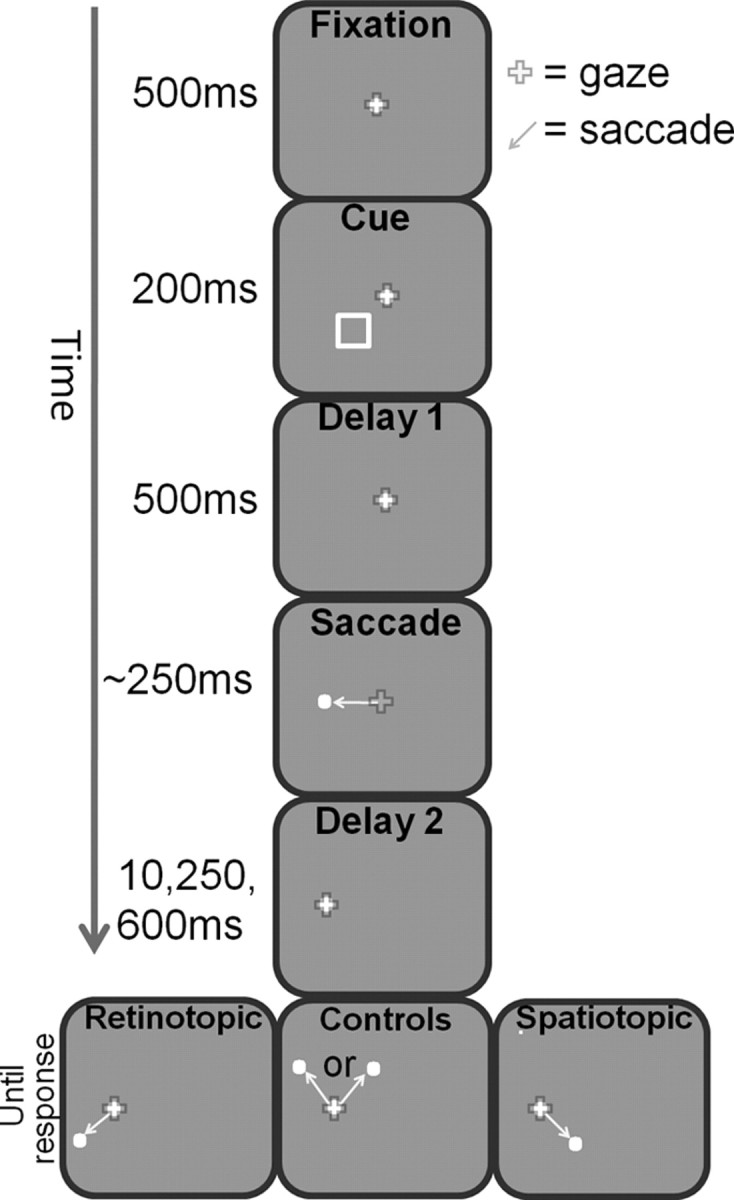Figure 1.

Experimental design: temporal aspects. While subjects maintained fixation on the central white fixation dot, a nonpredictive cue appeared for 200 ms in one of four possible locations. Subjects were instructed to maintain fixation and ignore the cue. This was followed by a 500 ms delay period (“delay 1”) of maintained fixation. The fixation dot then jumped 7° to the left or right, thereby indicating the subjects to generate an “intervening saccade” to its new location. At a variable delay after the completion of the intervening saccade (“delay 2,” lasting 10, 250, or 600 ms), the target appeared in one of four different positions in relation to the location of the cue: either at its spatiotopic location (same screen position; right panel), at the retinotopic location of the cue (left), or in one of the two control locations (middle). The subjects were asked to make a second saccade to the target as quickly as possible after its appearance.
